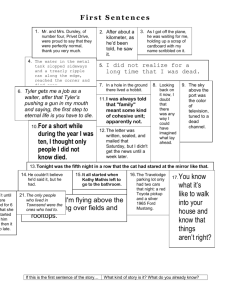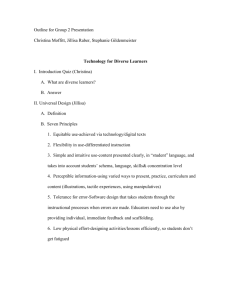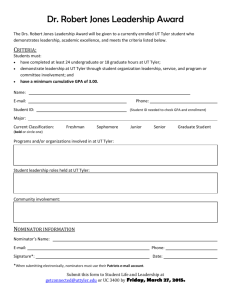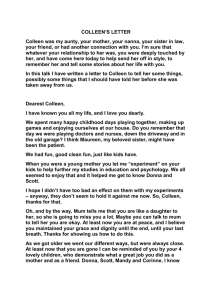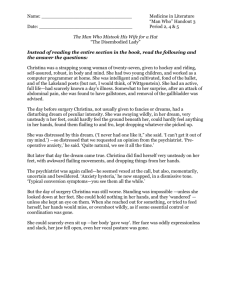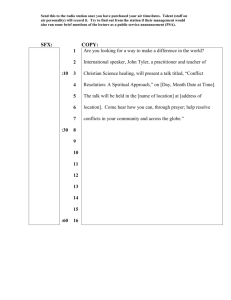Discovery Learning
advertisement
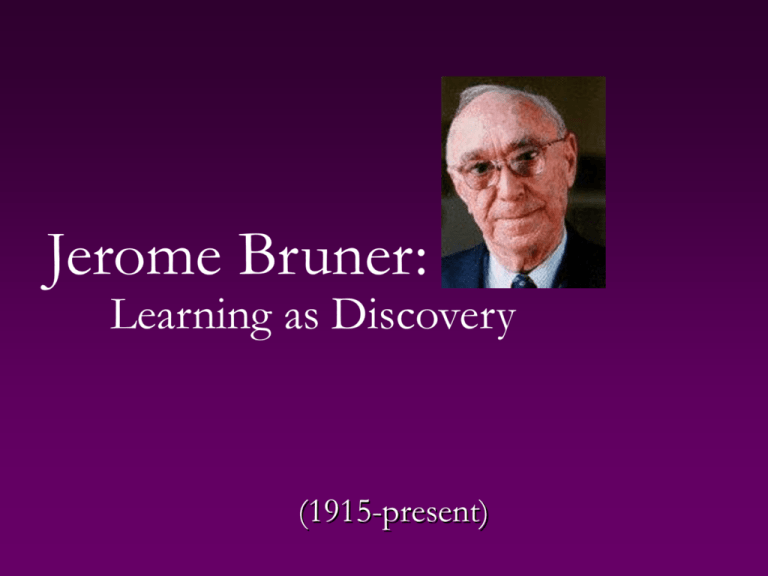
Jerome Bruner: Learning as Discovery (1915-present) JBerome runer : Learning as Discovery Christina, Colleen, & Tyler Group D Biographical Sketch •Born in New York City on October 1, 1915 •A.B. Duke University (1937) •A.M. Harvard University (1939) •Ph.D. Harvard University (1941) •United States Army's Intelligence Corps (1942-45) •Harvard University (1945-1972) JBerome runer : Learning as Discovery Christina, Colleen, & Tyler Group D Biographical Sketch (…cont.) •Established Center for Cognitive Studies in (1960) Director (1960-72) •President of the American Psychological Association (1964-65) •Oxford University (1972-80) Watts Professor of Experimental Psychology •NYU Law School (1991-present). Research Professor of Psychology JBerome runer : Learning as Discovery Christina, Colleen, & Tyler Group D Discovery Learning Theory “an approach to instruction through which students interact with their environment—by exploring and manipulating objects, wrestling with questions and controversies, or performing experiments” (Ormrod, 2001, p.442). JBerome runer : Learning as Discovery Christina, Colleen, & Tyler Group D Enactive Stage • From birth to about age 3. • Children need to experience the concrete. • Usually involves a motor response. • Children use actions to manipulate objects. • Objects are defined by what they can do with them. • Showing and modeling is important versus telling at this stage. JBerome runer : Learning as Discovery Christina, Colleen, & Tyler Group D Iconic Stage • From about age 3 to about age 8 • Children are able to think about things that are not physically present • Images are primarily visual or based in another sense • Ex. They can do math problems in their head. JBerome runer : Learning as Discovery Christina, Colleen, & Tyler Symbolic Representation Stage • This stage occurs at about age 7 • Bruner believes that in this stage, children are able to transform action and image into a symbolic system to encode knowledge • The “symbols” are primarily linguistic and mathematical • Symbolic Representation is a major tool in reflective thinking Group D JBerome runer : Learning as Discovery Christina, Colleen, & Tyler Group D Symbolic Representation In Action Young students would see a teacher fill a glass of one shape with water and then transfer that water into a glass of another shape. The students would say that because the glasses were different shapes, there is a different amount of water. Students that can understand Symbolic Representation are able to understand that the glasses have the same amount of water. JBerome runer : Learning as Discovery Christina, Colleen, & Tyler Group D In Conclusion… • Bruner believed that students learn best through discovery and a spiraled curriculum. • He said that knowing is a process rather than the accumulated knowledge as acquired in textbooks • Bruner believed that we should instruct students to use the tools, instruments, and technologies available to them to unlock their potential JBerome runer : Learning as Discovery Christina, Colleen, & Tyler Group D How Would Bruner Look In The Classroom • Inquiry-Based Science Lessons where students would be expected to investigate a hypothesis • Lessons involve both collaboration and internalization, with teacher support provided throughout • A sample lesson plan, following Bruner’s theory, has been created by Huntington College and appears at right JBerome runer : Learning as Discovery Christina, Colleen, & Tyler References And Links Huntington College Lesson Plan http://www.huntington.edu/education/lessonplanning/images/a natomy_la_ani.gif Bruner’s Theory http://evolution.massey.ac.nz/assign2/BP/Bruner.html Ormrod, J. (2001). Educational psychology: Developing learners (3rd ed.), p. 442. Upper Saddle River, NJ: Merrill/Prentice Hall. Group D
